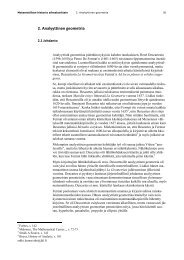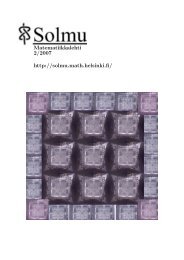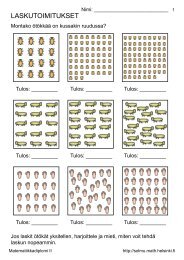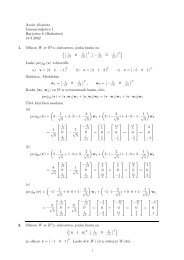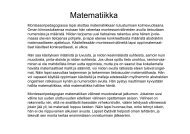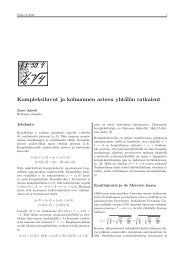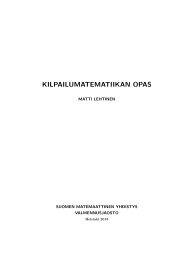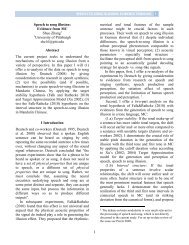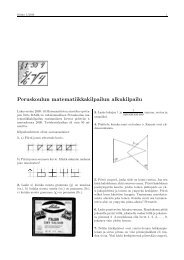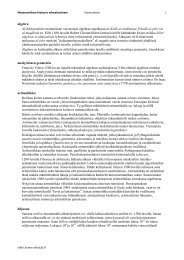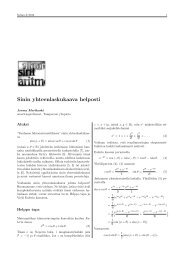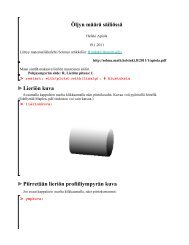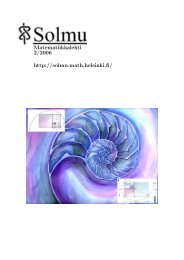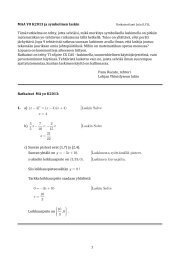Non-Newtonian turbulence: viscoelastic fluids and binary mixtures.
Non-Newtonian turbulence: viscoelastic fluids and binary mixtures.
Non-Newtonian turbulence: viscoelastic fluids and binary mixtures.
You also want an ePaper? Increase the reach of your titles
YUMPU automatically turns print PDFs into web optimized ePapers that Google loves.
18 1. <strong>Newtonian</strong> <strong>turbulence</strong><br />
The dimensionless constants Cp are not known, except for the universal value<br />
C3 = −4/5.<br />
An interesting case corresponds to p = 2; the K41 prediction for the second<br />
order structure function then is<br />
S2(ℓ) ∼ ɛ 2/3 ℓ 2/3<br />
The above scaling implies the power law energy spectrum:<br />
E(k) = C2ɛ 2/3 k −5/3<br />
where C2 is called Kolmogorov constant.<br />
(1.54)<br />
(1.55)<br />
Figure 1.2: Turbulent spectra in the time domain for data from the S1 wind tunnel<br />
ONERA [9] (Rλ = 2720, left) <strong>and</strong> a low temperature helium gas flow between<br />
counter-rotating cylinders [10] (Rλ = 1200, right).<br />
Longitudinal structure functions are convenient also for an experimental approach.<br />
Indeed, longitudinal velocity increments can be obtained by means of<br />
st<strong>and</strong>ard techniques such as, e. g., hot wire anemometry. Let us suppose to have<br />
a velocity field u which can be decomposed in a mean flow U = (U, 0, 0) <strong>and</strong><br />
a turbulent fluctuating part u ′ = u − U whose intensity is assumed to be small<br />
compared to the mean flow 〈|u ′ | 2 〉 1/2 ≪ U. Due to the cooling produced by the<br />
flow, the resistance of a hot wire perpendicular to the mean flow, say parallel to<br />
the z direction, is reduced. From the measure of this reduction, it is possible to<br />
obtain the time series of the velocity integrated in the direction of the wire:<br />
uN = [(u ′ x + U) 2 + u ′2<br />
y ] 1/2 = U[1 + u′ x<br />
U + O(u′2 x<br />
U 2)]<br />
(1.56)<br />
where it has been supposed that amplitudes of fluctuations in the two directions<br />
perpendicular to the wire are of the same order u ′ x ∼ u′ y . Within Taylor hypothesis,<br />
18



